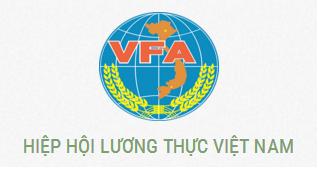 An Giang is a province in the southwest of Vietnam, bordering Cambodia. It is the gateway for trade between the Mekong Delta and mainland ASEAN countries.
An Giang is a province in the southwest of Vietnam, bordering Cambodia. It is the gateway for trade between the Mekong Delta and mainland ASEAN countries.
Over the past few years, An Giang’s economy has developed rapidly and steadily, doubling its GDP growth. The strength of An Giang is the production of rice, fishery products, trade services and tourism.
Rice output in 2011 reached 3.9 million tons topped the whole country, including high quality products such as long grain rice – jasmine – jasmine … accounted for 83% of total harvest, ensuring supply difficult markets. Domestic trade with attractive purchasing power of $ 3 billion, the most in the Mekong Delta (Mekong Delta), ranked fifth in the country after Ho Chi Minh City. Ho Chi Minh City, Hanoi. Exports reached US $ 830 million, with main sectors such as Pangasius, Rice, Vegetables, Fruit and Vegetables produced and processed according to international standards and Vietnam: SQF 1000, GlobalGap, VietGap, ISO, HACCP, BRC, GMP, …
Significant regional transport infrastructure is being strengthened to invest in development and connectivity throughout the region, facilitating the movement and transportation of goods.
An Giang creates favorable conditions for businesses, domestic and foreign investors to cooperate and develop.
I. An Giang position in the region and region
1. Geographic location
– Located in the South West of Vietnam
– The East borders with Dong Thap, Can Tho in the East, Can Tho in the East, Kien Giang in the West and Cambodia.
– Natural area: 3,537 km2, equal to 1.1% of the country. Of which agricultural land accounts for 79%.
– Population in 2011: 2.15 million people; equal to 2.4% of the country.
– Administrative divisions: 1 city, 2 towns and 8 districts.
2. Economic position
 – An Giang is one of the four provinces in the Mekong Delta key economic region.
– An Giang is one of the four provinces in the Mekong Delta key economic region.
– Trade gateway Mekong Delta with ASEAN countries: Cambodia – Laos – Thailand – Myanmar – Malaysia …
– To link the East-West economic axis of the region and the region.
– Cambodia border with nearly 100 km long border, with two Tinh Bien and Vinh Xuong international border gates, two Khanh Binh and Vinh Hoi Dong national border gates and one northern border gate.
II. An Giang economic potential (2011)
1. GDP growth rate:
11,07%; Inside:
– Agriculture – Aquaculture (KV I) : 3.77%
– Industry – Construction (KV II) : 12.42%
– Services (KV III) : 15.05%
2. Economic Structure
| KV I KV II KV III |
: 34,04% : 12,10% : 53,86% |
3. Import-export turnover: 922 million USD
– Export: $ 830 million.
– Import: 92 million USD.
4. Product output staples
Product Produce Export
Rice 3.9 million tons of rice 570 thousand tons of rice
Seafood 365 thousand tons 144 thousand tons
Vegetables of all kinds 850 thousand tons 4,5 thousand tons
5. Export market
– Rice: Direct export of 39 countries and territories; Africa in 11 countries (36%), Europe in 11 countries (2%), Oceania and the Americas in 5 countries (3%).
– Frozen Seafood: Directly exports 74 countries and territories, including 27 Asia, 25 Europe, 10 Americas 2, Oceania and 9 Africa.
– Frozen and canned vegetables: 80% in Russia, 10% in Australia, and 10% in other countries.
– Garment: 11.3 million products, US market …
6. Rice production following the chain link model
– An Giang is carrying out the production of rice in the model green way with the sample of green. Closed production process to supply seeds, control agricultural residues, fertilizer to ensure quality safety.
– At present, most rice trading companies in An Giang follow this pattern, in which typical application is the Plant Protection Services Joint Stock Company, Angimex – Kitoku Import Export Joint Stock Company. export chain link value model.
– Currently produced according to the intended process, down the same time, so when harvesting rice in bulk and quickly put into the plant for drying to dry standards, for quality grain better than traditional production. . Businesses are active in exporting and satisfying the high end market.
7. Seafood
– The total production is 365 thousand tons, including Pangasius, shrimp, other seafood.
– Aquaculture areas are lakes, cages and river fish farms. Most of them follow the SQF 1000 and Globalgap quality process attached to the processing plant, in which the leading ones are Agifish, Viet An, NTACO …
– Currently, there are 22 processing factories in the area with a capacity of 300 thousand tons of processed aquatic products per year.
8. Vegetables color
– An area of 60 thousand hectares, specializing in intensive farming in the districts of Cho Moi, Chau Thanh, Chau Phu, An Phu; ….
– Total output of 850 thousand tons of fruits and vegetables: corn, beans, sweet potatoes, tapioca, vegetables …
– Domestic fresh market is mainly exported to Cambodia, accounting for 70%, supplying to processing factories 30%.
III. The infrastructure:
1. Traffic transport
– Road: Highway 91 is 150 km long from Ho Chi Minh City. Can Tho – An Giang – Tinh Bien International Border connecting to Highway 2 of Cambodia. In 2012, the construction of Vam Cong Bridge, Cao Chau Bridge will shorten the time of 50% travel from Ho Chi Minh City. Ho Chi Minh City to An Giang. Is calling for investment in Can Tho – An Giang – Phnom Penh highways.
– Waterways: Tien River and Hau River flow through An Giang 100 km, these two important rivers downstream of the Mekong River trade to the East Sea, serving for the cargo transport of goods between An Giang and the Mekong Delta. – Cambodia and other regional countries.
– My Thoi seaport – An Giang receives 10,000 tons of tonnage vessels, annually receives cargo of up to 5 million tons. It is the most efficient and dynamic port in the region, capable of direct cargo delivery to regional ports such as Cambodia, Singapore, Malaysia, Indonesia, Philippines and North Asia. world.
– An Giang airport is included in the planning of the Vietnam airport system by the Government. Airport size allows ART72 / F70 aircraft to take off. The future to serve the needs of trade and tourism development, shaping 2020 welcomes guests 110 thousand – in 2030 is 300 thousand passengers.
2. Contact information:
Connect seamlessly with local and international internet telephony. Mobile phone networks have built nearly 800 mobile communications stations throughout the province to meet the 24-hour customer needs of communications.
3. Vocational Education and Training System:
An Giang has 01 university with regional and international level, training scale of 10,000 students; 02 vocational training colleges and health colleges train about 7,000 students according to the national and international standards.
Source: “An Giang Rice Census”

















